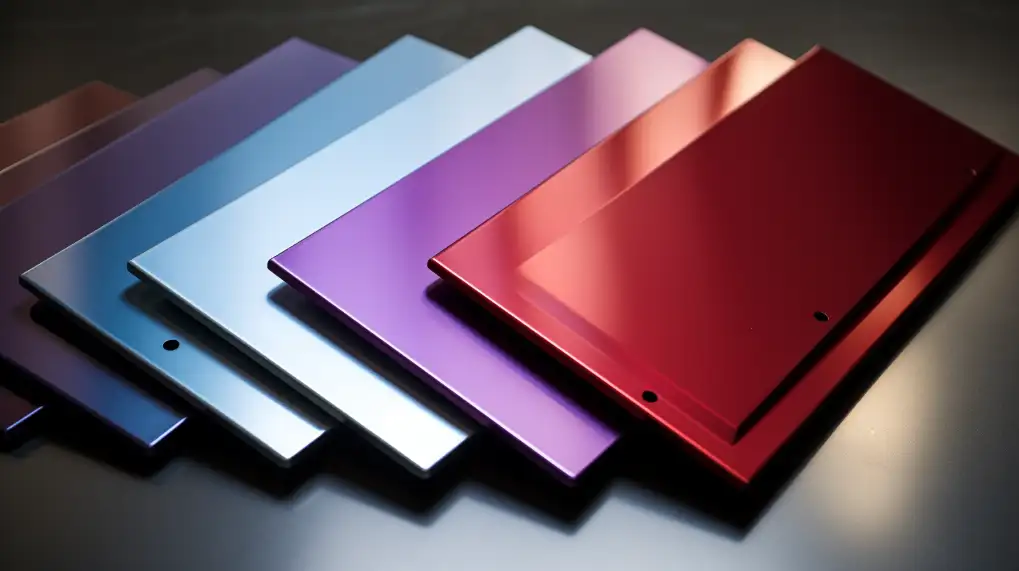
Building is an ever-evolving industry, with architects looking for materials that are resilient. Of the numerous at their disposal, bright anodized aluminum shines to a dazzling finish ranks among the most popular in the business. Its appearance and stable performance have made it a popular addition to settings where appearance and durability are needed. This combination of looks and performance is the main reason that so many designs have been made using it throughout the world.
- A Material That Transforms Modern Spaces: It is not just about building buildings anymore today; architecture is so much about creating experiences. Light anodized aluminum allows architects to combine form with function in a way that few materials can. Its finish surface provides it a reflective look that absorbs light very well, creating depth and sophistication in buildings. It also guards the underlying metal, hence making the material enduring in different environments. This is the reason why it is normally applied in situations where both performance and aesthetics should complement each other.
- Durability Comparable to Innovation: One of the most persuasive reasons architects prefer bright anodized aluminum is its durability. The anodizing process toughens the surface and it wears off, corrodes, and is harmed by the environment. This makes it an excellent choice for both exterior and interior applications. Anodized finishes do not peel or chip, in contrast to coatings or paint, which are the best choice for heavily trafficked areas. Design freedom architects who are developing long-lasting buildings view this strength as a promise of long-term value.
- How Technology Impacts the Material: Every great material for architecture is driven by high technology. Enterprises such as JM Aluminium have mastered high levels of know-how in extrusion, anodizing, and fabrication to suit aluminium to the wide needs of industries. Aluminium profiles are molded into products that sufficiently meet contemporary construction through precise cutting, milling, drilling, and bending. These technological units ensure the final material is of the precise specifications desired by architects and contractors. Bright anodized aluminum, having gone through such precision, is even more reliable to work with large-scale projects.
- Aesthetic Value Beyond Common Materials: Though strength and usability are top priorities, beauty reliance is also a function of architecture. Bright anodized aluminum gives structures a better-than-average surface beyond common metallic finish. The metallic finish gives buildings a shiny, contemporary look that makes them prominent on city streets and landscapes. What can be done to make it reflect light in new and innovative ways gives commercial buildings, residential skyscrapers, and public buildings extra eye appeal. For architects, this is an opportunity to provide works that are memorable and visually striking.
- Higher Uses in Urban Development: As cities continue to expand, the demand for materials that will facilitate mass development is limitless. Bright anodized aluminum has played a central role in developing today’s skylines, from skyscraper facades to transport stops and cultural centers. It can be used in either structural or decorative form, thus making it all the more popular. Its presence with cutting-edge extrusion and coating plant also adds to its application in large-scale projects that define modern urban existence.
- Enabling Imagination in Architectural Designs: Every architect wants to leave his or her own mark on his or her product. Anodized bright aluminum makes this possible by allowing the development of customized finishes, shapes, and applications. Minimalism or revolutionary innovation are themes for the project, which do not concern this material, since it blends with the concept effortlessly. Its ability to combine aesthetics with strength stimulates architects to explore the limits of creativity with ideas that would otherwise be limited by standard materials.
- Synergizing Strength with Sustainability: Sustainability has become the top demand of modern construction, and bright anodized aluminum is the best fit for the trend. Aluminium is naturally recyclable without weakening it, and anodizing provides it with a green glow of protection that costs less to replace. If used by the designers, the material not only creates beautiful buildings but contributes towards greener processes as well. The union of sustainability and strength makes it a future-proof solution for architecture.
- Measuring Up to the Standards of Modern Building: Building today operates under tight timetables and high standards. Anodized aluminum in its bright form is an essential tool because it is simple to handle, light, and durable. These characteristics render it simpler to ship, install, and conform to building timetables. Coupled with day-and-night service and continuous quality assurance, the material is even more appealing for contemporary projects. The builder and architect are aware that they can trust it without encountering unwarranted delays or issues.
- A Finish Compatible with Design Freedom: Designers would rather have material flexibility so they could achieve their ideals. Bright aluminum anodized provides that flexibility with its capacity to meet various design demands. The material is appropriate in the use of curtain walls, facades, window frames, doors, and other trimmings. Because anodizing actually darkens the metallic sheen naturally instead of hiding it, the end product appears more natural and advanced. This kind of versatility gives architects hope to experiment freely without losing any strength or safety.
- Looking Ahead to the Future Use of Aluminium: The future will be developed on materials that offer performance, style, and sustainability all at once. Anodized aluminum is already doing its work and will be even more applicable in the future. With changing technology and industries moving towards best practices, aluminium is always a reliable component of modern design. The innovation potential and functionality of aluminium guarantee it will not only be in demand but also power development in building practices.
Conclusion
In the fast-changing world of architecture today, bright anodized aluminum has actually risen to become a material that maintains all the primary characteristics modern projects demand. Its affordability, aesthetics, durability, and sustainability have made it the favored material among designers aiming to leave behind long-lasting and astonishing structures. With the technological capability and know-how of JM Aluminium, which is the Western India’s largest aluminium extrusion company, the material is driven to its full potential to cater to the demands of industries across the country. It is this consistent partnership of innovation and functionality which has inspired it to be a source of constant motivation for architects in designing the world of tomorrow.




